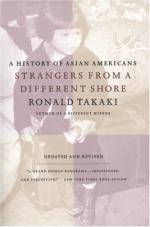|
This section contains 10,986 words (approx. 37 pages at 300 words per page) |

|
In 2000 the census reported a population of 11.9 million people of Asian descent (either one Asian group alone or in combination with any other groups) in the United States, making up 4.2 percent of the total U.S. population. The change had been dramatic in the last four decades of the twentieth century. In 1960 the Asian American population was only 878,000, making up less than 1 percent of the total U.S. population. The national backgrounds had changed dramatically as well. In 1960, 99 percent of Asian Americans were from three national backgrounds: 52 percent were Japanese, 27 percent were Chinese, and 20 percent were Filipino. (See chapter 14 for more information on these three groups.) The two largest Asian American groups in 2000 were Chinese Americans and Filipino Americans. They were followed by Asian Indians, Koreans, and Vietnamese, with Japanese as the sixth largest. During...
|
This section contains 10,986 words (approx. 37 pages at 300 words per page) |

|


